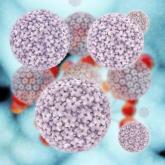News


FROM OBSTETRICS AND GYNECOLOGY
Cervical cancer screening should begin at age 21 years and continue even beyond a woman’s reproductive years, but yearly testing is neither necessary nor recommended for most women, according to new guidelines issued by the American College of Obstetricians and Gynecologists.
Since cervical cancer is “a rather indolent disease,” more frequent testing is much more likely to result in anxiety and unnecessary treatment than in preventing cancers, according to the document, which was published online in Obstetrics and Gynecology (2016 Dec 22;127:e1-20).
“Annual screening leads to a very small increase in cases of cancer prevented at the cost of a very large excess of procedures and treatments and should not be performed,” members of the ACOG Committee on Practice Bulletins-Gynecology wrote. Excisional procedures can confer an increased risk of preterm birth – another serious consideration when determining the frequency of screening.
And, wrote the committee, the psychosocial aspects of earlier screening must also be taken into account.
“The emotional effect of labeling an adolescent with a sexually transmitted infection and potential precancer must be considered, because adolescence is a time of heightened concern for self-image and emerging sexuality,” they wrote.
Recommendations in this set of guidelines differ slightly from those published in 2015 by the Society of Gynecologic Oncology (SGO) and the American Society for Colposcopy and Cervical Pathology (ASCCP). Both the SGO and ACOG documents take into account the recently approved HPV DNA test, which is indicated as a primary cervical cancer screening tool.
The test detects 14 high-risk HPV types, and specifically identifies HPV 16 and 18. A positive result for either of those types should prompt a colposcopy; women who test positive for any of the other 12 high-risk types should have a Pap test.
The SGO guidelines say that primary HPV testing alone can be considered for women beginning at age 25 years. The ACOG document also notes that HPV testing alone can be considered an alternative for women older than 25 years but stresses that cytology alone or co-testing remain the options specifically recommended in current major society guidelines. If screening with the primary HPV test is used, it should be performed according to the SGO guidance, the ACOG document states.
Dr. Jill Rabin favors the ACOG recommendations over HPV-only testing. She is a professor of obstetrics and gynecology and cochief of the division of ambulatory care, Women’s Health Programs–Prenatal Care Assistance Program Services at Northwell Health, New Hyde Park, N.Y.
“I know certain groups – and not just SGO – go with just the HPV-only test, but I can’t bring myself to do that,” she said in an interview. “Most of the literature agrees that you need to look at both cytology and HPV testing to get the best results. And all cervical cancer is not driven by HPV infections.”
The ACOG document stresses that sexual initiation – whatever the age – should not be the precipitating factor for the first cervical cancer screening. HPV infections are normally acquired very quickly after vaginal intercourse begins, although nearly all cases are naturally cleared within a couple of years. From ages 21-29 years, cervical cytology alone is sufficient for these women, and primary HPV co-testing is not appropriate. The recommended screening interval is every 3 years.
HPV testing is more sensitive than is cytology but less specific, the authors said. And because women in this age group often have noncarcinogenic, transient HPV infections, co-testing could drive more testing and interventions without decreasing cancer incidence.
For women aged 30-65 years, however, HPV testing combined with cervical cytology is the optimum choice and should be conducted every 5 years. If cytology alone is performed, however, the recommended interval is every 3 years.
Any woman in this age group who has an HPV-positive co-test with negative cytology should be retested with both methods in 12 months. A colposcopy is recommended if the repeat cervical cytology test result is unspecified atypical squamous cells or higher, or if the HPV test result is still positive. Otherwise, the next co-testing can occur 3 years later.
As an alternative strategy, an immediate HPV genotyping can be performed; if high-risk strains are present, an immediate colposcopy is indicated.
A history of having had the HPV vaccine series doesn’t obviate the need for screening or change the basic recommendations for screening type or interval, according to the ACOG document. Even the 9-valent vaccine doesn’t cover all cancer-associated HPV. And many women may have had the series after already acquiring an HPV infection, which reduces the vaccine’s efficacy.

